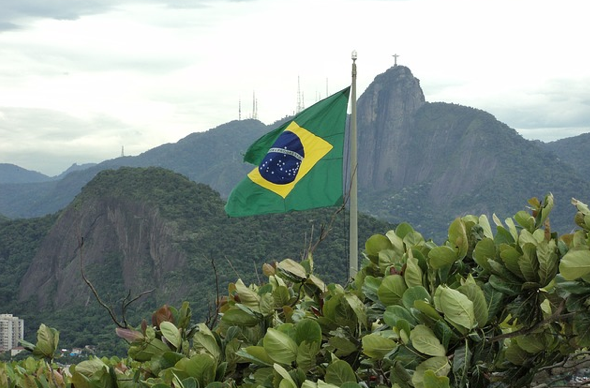Simon Romero has written a solid article on the front page of yesterday’s NYT about how Brazil’s rise and activity in Latin America is creating diplomatic problems with some its regional neighbors. The article itself is worth reading in its entirety, as it points to an interesting trend in regional politics, but for brevity’s sake, here is the crux:
…as American dominance in the region recedes and Brazil increasingly flexes its newfound political and economic might, it has begun to experience the pitfalls of the role as well: a push-back against the hemisphere’s rising power.
The article uses the recent controversy in Bolivia over the TIPNIS highway, which is being funded by Brazil’s well-capitalized development bank (BNDES), to demonstrate how foreign-backed interests are causing domestic issues for Bolivia’s Evo Morales and generating anger amongst a section of Bolivian society (not to mention support from another, anti-Evo section claiming solidarity with the movement, an unintended consequence for the Bolivian leader).
Two items from the article caught my attention that I want to address here:
1) The first is “The New Superpower in the region” theory. This not-so-new phenomenon has been well-documented in the past. Brazil’s rise and relations with and backing of projects in neighboring Latin American countries have even prompted some analysts to question whether Brazil is creating its own ‘Backyard’, a reference to Theodore Roosevelt’s application of the Monroe Doctrine, further perpetuating (albeit indirectly) the belief that Latin America is a region prone to influence of one strong power, except that this time the balance is shifting from external (United States) to internal (Brazil).
It should be noted that Brazil’s relations with its neighbors are generally very good, and Lula helped solidify many key relationships at critical times for Brazil. Nevertheless (and especially with Lula and his charisma gone) the article alludes to what has been and will continue to be one of the biggest challenges facing Itamaraty and Brazilian leadership’s foreign policy.
2) The article mention’s Brazil’s role in the TIPNIS highway and desire for Bolivian resources, especially natural gas and hydroelectric power. But it barely touches on the other reason, which is direct, convenient overland access to the Pacific. Instead, this reason is dismissed by Brazilian officials:
Brazilian authorities argue their country has access to…routes across the continent through which it can send goods to ports on the Pacific.
What are these alternative routes? And given their existence, why try constructing a road fraught with political difficulties?
The 2007 agreement between Evo, Bachelet, and Lula for a South American highway through Bolivia, and the 2009 agreement for the TIPNIS were for big roads through Bolivia presumably because of the advantages of going through Bolivia to ports in northern Chile than some of the alternatives:
- Via the Amazon. Utilizing the Amazon via Manaus-Iquitos poses problems because even though international agreements allow for free navigation, the Amazon’s beginning in Puerto de Nauta, Peru is still more than 500 miles from the port of Callao in the south and several hundred miles from the ports of Bayovar and Paita in the north. The tributaries that feed to it are also hundreds of miles from the Pacific, and many of them are non-navigable, according to a study published by the University of Sao Paulo State (UNESP).
- Via Argentina/Paraguay. More circuitous route, more fuel/time = not as efficient.
- Around Tierra del Fuego. Ditto reason above
Brazilian officials should closely watch the Bolivian reaction to TIPNIS with the understanding that the fallout from sensitive sovereignty issues could ultimately negate economic gains.

Reply